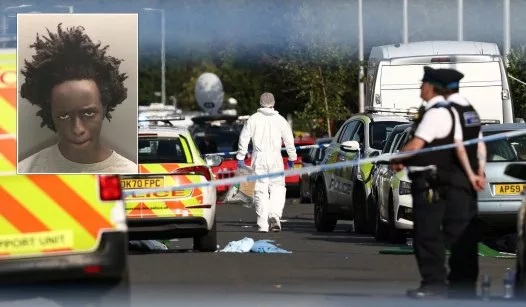One year has passed since the tragic events in Southport, where a series of stabbings shocked the community and raised serious concerns about public safety. The incident, which claimed the lives of several young girls, has left an indelible mark on the town and sparked a broader conversation about violence and its implications in our society.
In the aftermath of the stabbings, many began to speculate whether this horrific act was an isolated incident or part of a more troubling trend. The brutality of the attacks led some experts to suggest that it could have been a practice run for a mass killing on a larger scale. This unsettling theory has fueled discussions about the mental health of perpetrators, the influence of violent media, and the need for more robust community safety measures.
The Southport stabbings not only devastated families but also ignited a national dialogue about the factors that contribute to such violence. Communities across the United States have been prompted to examine their own safety protocols and the effectiveness of current laws regarding weapons and mental health support.
As we reflect on the past year, it’s essential to consider not just the immediate impact of this tragedy but also the long-term implications. How can we prevent such incidents in the future? What role do community resources play in addressing the underlying issues related to violence? These questions remain at the forefront of discussions among policymakers, law enforcement, and mental health professionals.
In the wake of the Southport tragedy, there has been a push for enhanced mental health services and better access to support systems for individuals in crisis. Advocates argue that early intervention can help mitigate risks and prevent violent outbursts. Furthermore, community engagement initiatives have gained traction, encouraging residents to foster connections and create a supportive environment where individuals feel safe to seek help.
Law enforcement agencies are also reassessing their strategies in light of the stabbings. The focus has shifted toward proactive measures, such as community policing and the establishment of neighborhood watch programs. These initiatives aim to strengthen relationships between police and residents, fostering a sense of shared responsibility for community safety.
Moreover, the incident has reignited debates surrounding gun control and the accessibility of weapons. While the Southport stabbings involved knives, the broader conversation about violence often circles back to firearms. Advocates for gun control argue that stricter regulations are necessary to prevent similar tragedies, while opponents emphasize the importance of personal freedoms and responsible ownership.
As we navigate the complexities of these discussions, it’s crucial to remember the human impact of such violence. The families affected by the Southport stabbings continue to mourn their losses, and their stories serve as a poignant reminder of the need for compassion and understanding in our communities.
In conclusion, the Southport stabbing spree was not just a tragic event; it was a wake-up call for a nation grappling with issues of violence, mental health, and community safety. As we move forward, it is imperative that we learn from this tragedy and work collaboratively to create a safer environment for all. By addressing the root causes of violence and fostering a culture of support and understanding, we can hope to prevent future tragedies and honor the memories of those we have lost.
